Thua Thien Hue, a province in central Vietnam, is a region steeped in history and cultural heritage. One of its most remarkable features is the presence of numerous traditional craft villages, each with its unique history and artistic practices. These villages not only provide a window into the past but also continue to thrive as vibrant communities where ancient crafts are preserved and passed down through generations. In this article, we will explore some of the most notable traditional craft villages in Thua Thien Hue, highlighting their historical significance, the unique crafts they produce, and their appeal as tourist destinations.
Thua Thien Hue, with its rich history spanning nearly 400 years, is home to a diverse array of traditional craft villages that have been meticulously preserved and nurtured over the centuries. The region boasts approximately 88 traditional villages, with 69 of them specializing in handicrafts. These villages are cherished for their unique characteristics and serve as burgeoning attractions for tourists from both domestic and international origins.
Conical Hat Craft Village
History and Tradition
The craft of making conical hats, known as "nón lá," has deep roots in Thua Thien Hue, spanning hundreds of years. These hats are an iconic symbol of Vietnamese culture and are known for their practicality and beauty. In Hue, the conical hats are particularly famous for their intricate designs and high quality.
Hue Poem Conical Hats
One of the most distinctive features of Hue's conical hats is the "nón bài thơ" or poem conical hats. These hats are considered genuine works of art, adorned with symbolic imagery such as the Truong Tien Bridge, Ngu Binh Mountain, Ngo Mon Gate, Phu Van Lau, Thanh Toan tile-roofed bridge, along with verses and images of Hue intricately embroidered and painted on the hats by skilled artisans.
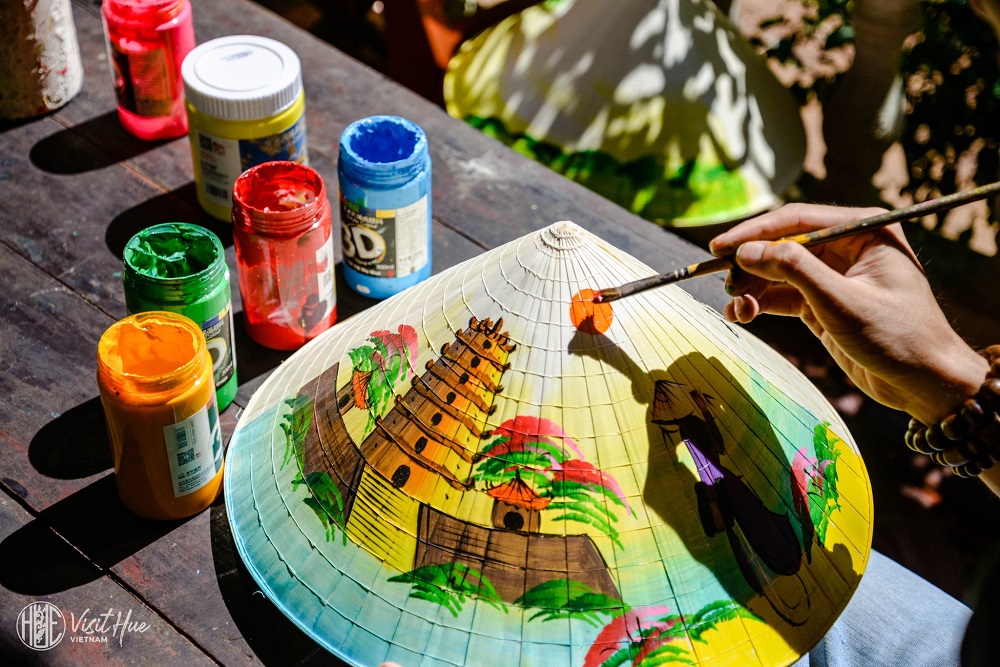
An artisan paints decorative images on Hue conical hats (Photo by VisitHue)
Hue conical hats, especially poem conical hats, are not just simple hats but a true work of art. To get a satisfactory hat, Hue hat artisans must go through many meticulous steps, requiring diligence and ingenuity from the workers. From choosing the frame, bending the brim, roofing leaves, cutting patterns, finishing the hat, and finally polishing and preserving it... Maybe that's why Hue hats are so popular with many tourists.
Tourism thrives in Hue, conical hats have become souvenirs with Hue's unique culture that are popular with tourists. Many tourists have come to hat villages to witness and participate in the stages of hat making. Many people were really surprised and excited when the hat maker saved their photo and name on the poem hat to take home as a souvenir.
Places to Visit and Shop
If you want to experience the craft of conical hat making firsthand, there are several places in Hue where you can visit and shop for these unique souvenirs:
- Luc Bo Cultural Space (79 Nguyen Chi Dieu, Hue City)
- Dong Ba Market (Tran Hung Dao Street, Hue City
Thuy Xuan Incense-making Village
Historical Background
Thuy Xuan Incense Village, located in Hue City, is the largest of its kind in the region. This village has been renowned for its incense production for centuries, with the craft being passed down through generations.
Incense-making Process
Visitors to Thuy Xuan can witness the intricate process of handcrafting incense. The production involves several stages, including selecting the right materials, grinding herbs and other ingredients, and shaping the incense sticks by hand. The process is labor-intensive and requires great skill and patience.
Incense in Thuy Xuan has a unique aroma and good quality. Most people here work as incense makers and make a living from making incense. The traditional profession of our ancestors is deeply ingrained in the flesh and blood of the people of Thuy Xuan village. They are passionate, love their job, and are meticulous about their job from morning to night. They maintain the profession of making incense because their passion for the profession is the main thing because incense is made by hand, without using a beater, so the productivity is not as high as making a machine, and the price is very affordable, so the profit is only enough to cover meals. During the day, customers who come to buy incense, souvenirs or just to take pictures are all very happy and welcoming with gentle, friendly smiles.
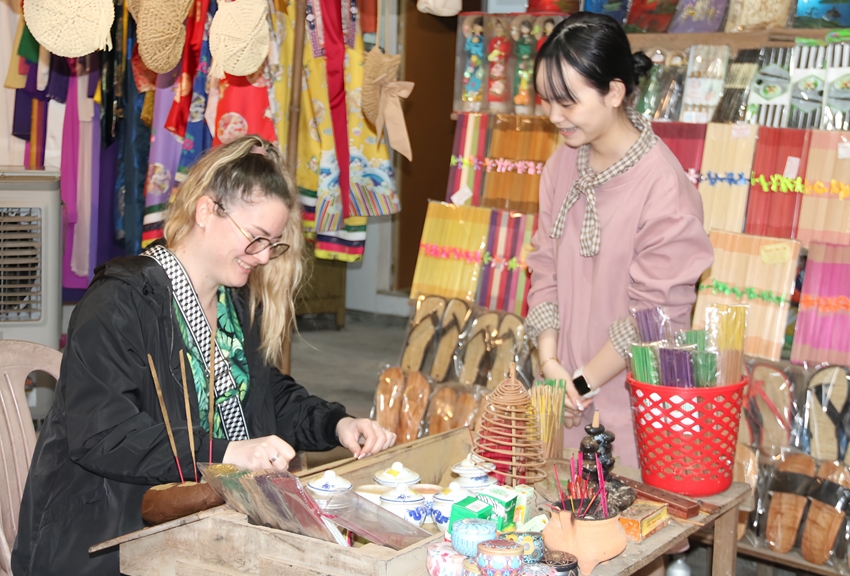
Experience making incense with local people
As soon as you stepped foot into the village, the fragrance of incense filled the air. To make an incense stick, the first step is to choose ingredients, usually including Five-spice herbal medicine with cinnamon, cardamom, pine buds, cloves, star anise, eucalyptus, and cinnamon... mixed with water and mix again. together to make incense powder. Next is the step of making the incense core, the incense core is made from bamboo intestines split into small pieces, and dried in the sun for many days to dry and crispy. The bamboo used to make the incense core is old bamboo taken from Nam Dong Forest, Binh Dien, and Phong Son. The incense powder is mixed and then tightened around the incense core, tightened until it is thin and round enough, then dried in the sun. The people of Thuy Xuan village still preserve the traditional way of making incense instead of using an incense machine, although it is quite more difficult, but it is still folk, preserving the tradition and "soul" of the profession.
Thuy Xuan incense village supplies the market with all kinds of incense such as: Cinnamon incense, lemongrass oil incense, deodorizing incense, incense sticks, and agarwood buds, the most prominent is Agarwood incense, the village's incense not use chemicals, only Using natural flavors and ingredients that are friendly to the environment and health, the product has a brighter yellow color than other flavors and has a pleasant characteristic scent.
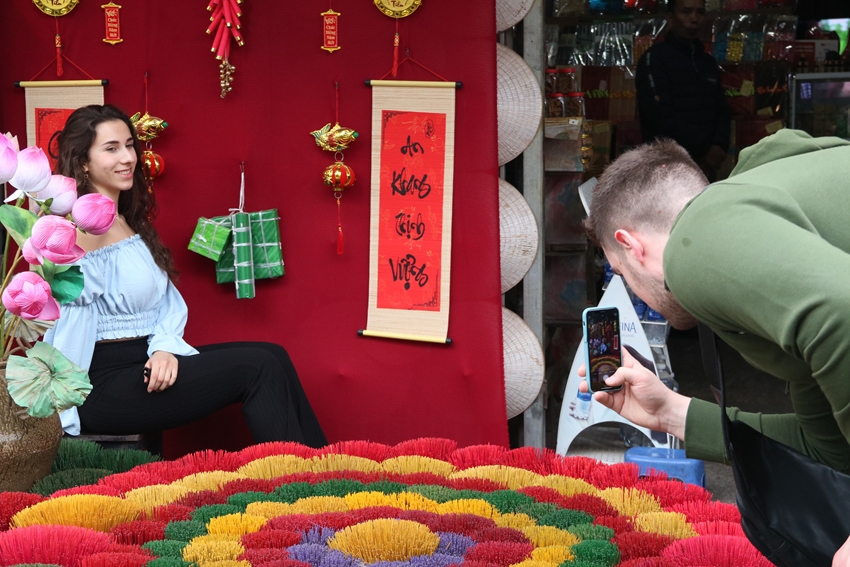
Take memorable photos in the incense village
Tourist Attractions and Activities
Thuy Xuan Incense Village has become one of Hue's popular "check-in" spots for both locals and tourists. Visitors can engage in various activities, such as:
- Watching artisans at work
- Trying their hand at making incense
- Learning about the cultural and spiritual significance of incense in Vietnamese tradition
Address: Huyen Tran Cong Chua Street, Hue City.
Thanh Tien Paper Flower Village
Craftsmanship and Tradition
The Thanh Tien Village is renowned for its craftsmanship in creating paper flowers, particularly lotus flowers, for religious worship. This tradition dates back hundreds of years and has been meticulously preserved by the villagers.
Spiritual Significance
Paper flowers from Thanh Tien hold a significant spiritual value, often used to adorn ancestral altars in Thua Thien Hue. The intricate designs and vibrant colors of these flowers make them not only religious symbols but also exquisite pieces of art. Paper flower products are often decorated in places of worship in the house, temples, shrines, temple, altars of Ong Dia, Kitchen God, etc. The advantages of Thanh Tien paper flowers are: rich in color. beautiful color, and shape, long-lasting and shows solemnity, only changed once a year during Tet so it is easily accepted and lasts for a long time. Because of these characteristics, the official production time of this craft only takes place for a short period at the end of the year, mainly in December. Today, the lotus flower has been restored and is produced year-round, becoming a unique decorative flower. A bouquet of lotus flowers, leaves, and buds standing at a distance of several meters, people think are real lotus bouquets, and Thanh Tien paper lotus, a typical symbol of Vietnamese culture, has traveled to Europe and Asia. America, Australia through tourists coming to Hue.
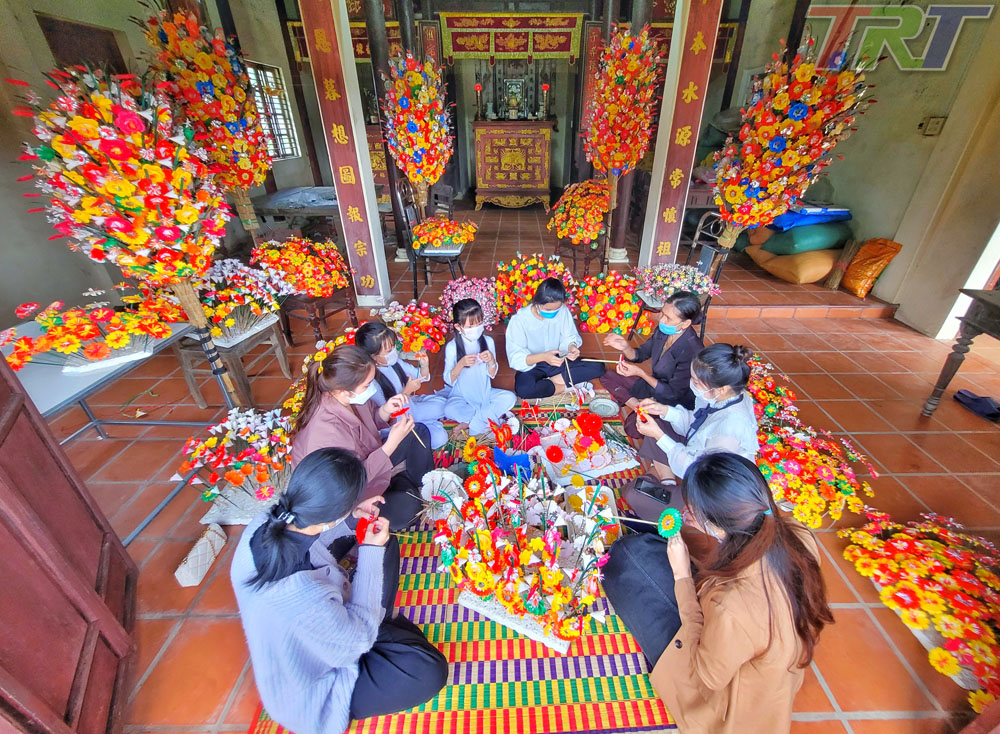
Near Tet, Thanh Tien village is busy making paper flowers
Visitor Experiences
Tourists visiting Thanh Tien Village can immerse themselves in the craft by:
- Observing the delicate process of making paper flowers
- Participating in workshops to create their own paper flowers
- Learning about the historical and cultural context of the craft
Address: Thanh Tien Village, Phu Mau Commune, Phu Vang District, Thua Thien Hue Province.
Sinh Folk Paintings Village
Historical Development
Sinh Folk Paintings Village, also known as Lai An Village, has a storied history dating back approximately 400 years. The village is famous for its folk paintings, which were originally created to worship saints and ancestors.
Cultural Importance
Sinh folk paintings are deeply rooted in the spiritual and cultural life of the local people. They are believed to bring blessings for prosperity, health, and protection against evil spirits. Over time, these paintings have evolved into a renowned cultural commodity, drawing the attention of art enthusiasts and tourists alike. Sinh paintings are worship paintings, with the following sets: paintings to worship one's destiny, paintings to worship ancestors, paintings to worship the next life, paintings to worship pregnant people, paintings to worship children... In all, there are about fifty sheets with the topic of different talents. All of the above paintings reflect ancient beliefs and are a lasting image of ancient Vietnamese thought in front of a wild, mystical, and strange nature...
Some altar paintings have artistic value, such as the Bat Am set. includes eight girls performing various types of instruments, and the whole set has 4 paintings. Each painting is a set of To Nu Hue paintings. The late artist Pham Dang Tri, a talented painter of ancient lands, found in Sinh paintings the "Five Hue Colors" color palette, slightly different from the "Oriental Five Colors" palette. If we compare the colors used on the altar paintings, we will see that it is close to the decorative blue paintings on the architecture of the ancient capital. It is the harmony between yellow and indigo, red and jade, blue and fire yellow, and amber... Today, this line of folk paintings still exists and develops in Hue, and the theme is also supplemented. supplemented with segments about nature, houses, streets, and daily activities.

The images are wood engravings meticulously printed and color-coordinated by artisans

Tourists were excited when artist Ky Huu Phuoc showed them how to create a traditional Sinh village painting
Tourist Attractions
Visitors to Sinh Village can explore:
- The traditional painting techniques used by local artisans
- The cultural stories and legends depicted in the paintings
- Workshops where they can create their own folk paintings
Address: Sinh Village (Lai An Village), Phu Mau Commune, Phu Vang District, Thua Thien Hue Province.
Bao La Bamboo Knitting Craft Village
Traditional Weaving Techniques
Bao La Village, located on the northern bank of the Bo River, is renowned for its traditional craft of weaving rattan and bamboo products. This craft has been a part of the village's culture for generations, with artisans creating a wide range of products, from household items to fine arts.
Products and Cultural Significance
The products from Bao La Village are not only practical but also carry significant cultural value. The weaving techniques have been passed down through families, ensuring the preservation of this unique craft.
Bamboo is a plant that is closely associated with the life of many Vietnamese villages and has become a beautiful feature of Vietnamese traditional culture. Bamboo grows around houses, gardens, village roads, and alleys and provides people with many seemingly simple but very necessary items for the lives of ancient Vietnamese people. The type of bamboo that Bao La villagers use to weave baskets and other close-knit items in family activities and agricultural production is a special type of bamboo: straight stems, long stems, which people here often call is Bamboo umbrella. Through the calloused hands of many successive generations of people in this village, the reputation of a commodity that is very close and necessary to human life such as baskets, baskets, baskets, and baskets has built up. Weaving, steaming, wicking, etc. Although it is a side job, weaving has attracted all ages of workers in the family and in the village. Healthy people buy, cut bamboo, and transport it to the village. Elderly people saw bamboo, split slats, sharpened bamboo, children knitted bamboo, and women carried products to markets in villages and cities.
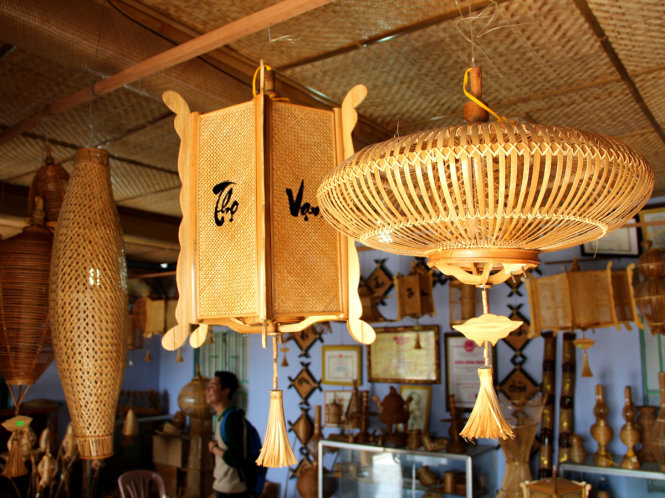
Today, along with farming work, people in Bao La village continue to embark on their traditional bamboo weaving craft, a profession whose popularity is associated with the name Bao La weaving village. In addition to making traditional products, production is organized by family and hamlet such as Xom Cho specializes in weaving and sifting; Xom Dong specializes in weaving baskets and mats; Xom Chua specializes in weaving; Xom Dinh and Xom Hop specialize in weaving baskets of all kinds; Cau Hamlet specializes in weaving baskets, baskets, and baskets.
Visitor Attractions
Tourists visiting Bao La Village can:
- Witness the intricate weaving process
- Purchase handcrafted bamboo and rattan products
- Explore the cultural significance of bamboo and rattan in Vietnamese daily life
Address: Quang Phu Commune, Quang Dien District, Thua Thien Hue Province.
Pho Trach 'Bang' Grass Mat Village
Historical Background
Pho Trach Village, located in Phong Dien District, is famous for its craft of making grass mats from Lepironia articulata, a weed that grows in the flooded fields of the region. This traditional craft has been practiced for centuries, transforming the weed into practical and beautiful mats.
Craft Products and Techniques
The mats produced in Pho Trach are known for their durability and unique designs. The process involves harvesting the grass, drying it, and weaving it into mats using traditional techniques. The eagle cushion is woven from the eagle grass plant. The almond grass plant (almond sedge plant), also known as the almond plant, has the scientific name Lepironia articulate and belongs to the sedge family. It is a wild plant with a vertical stem about 1m high, known as a heavenly material for people here to develop handicraft villages, "turning grass into money".
From a weed growing in flooded lowlands, people in Pho Trach Village, Phong Binh commune, Phong Dien district have turned them into hundreds of thousands of practical, beautiful, and eco-friendly handicraft products. environment. Forming a traditional craft village with a long history of hundreds of years with the famous brand "Pho Trach Bang Craft Village" (people know it as "Pho Trach Dem")
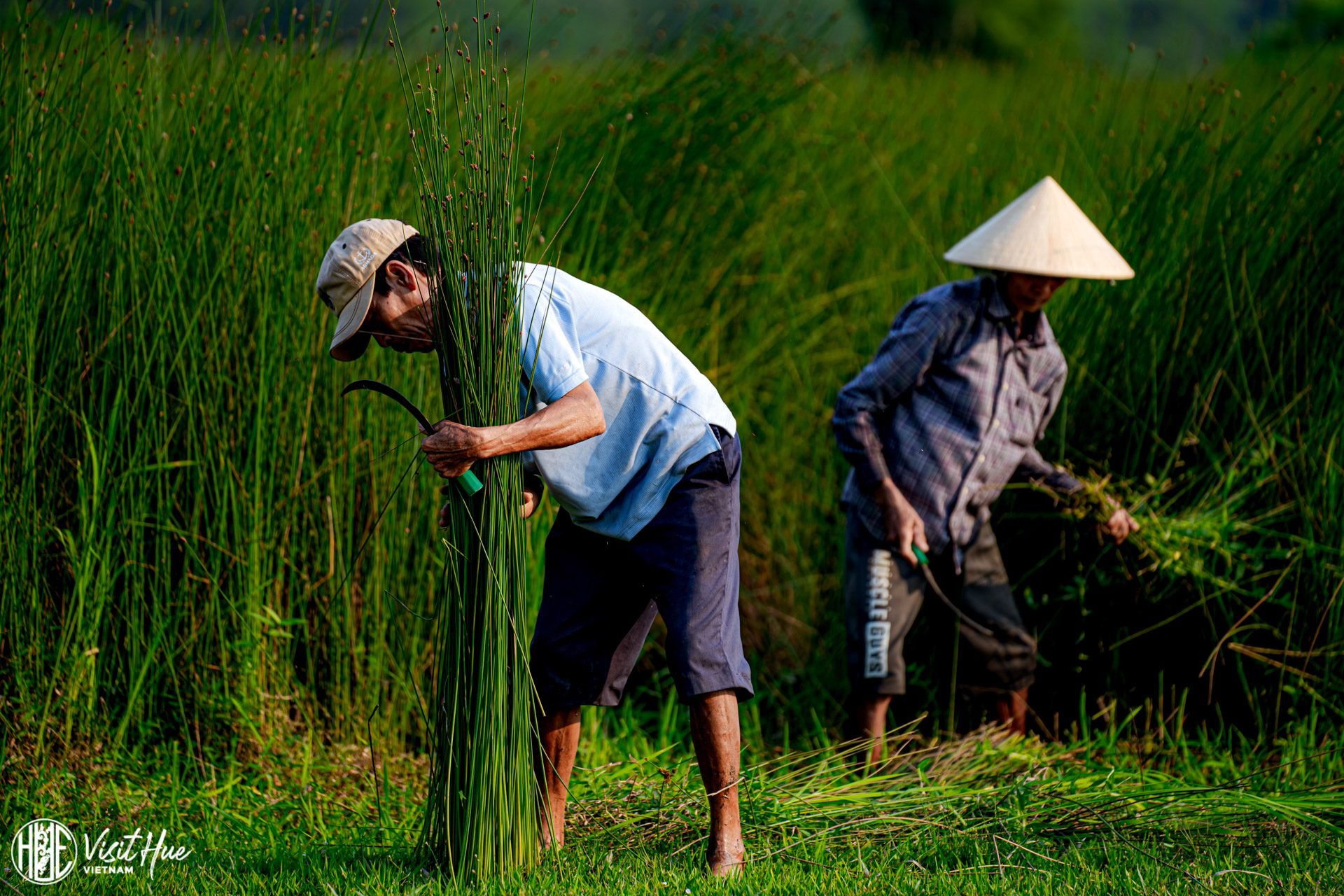
Villagers harvest "Bang" grass (photo by Le Dinh Hoang)
The process of making an eagle cushion is quite elaborate, going through many stages. The grass plant is cut in the field and dried under natural sunlight for 3-5 days. After being dried, the grass tree is very tough and strong, people choose grass trees of the same size to facilitate weaving the product. Next is the pounding stage, the eagle is taken to a mortar and pounded until the eagle fiber is flat and soft before knitting. When knitting, people arrange soft cotton fibers in the same direction, about 20-30 fibers, and turn them in a direction perpendicular to the pre-arranged fibers, patterns or letters can be dotted to increase aesthetics. , when installing, just put two threads on top of two threads and keep doing so until the length is long enough, then start twisting to keep the mattress at the right size and not coming loose.
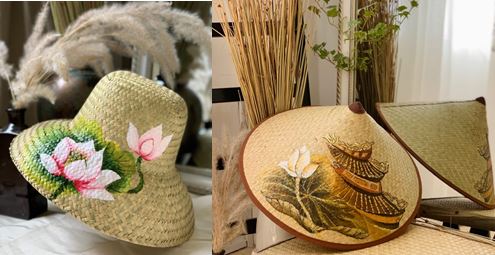
The grass craft village in Hue is an attractive destination for tourists coming to Hue. Visitors coming here can visit the craft village, learn about the process of making products from the grass plant, and buy unique souvenirs for themselves.
Visitor Attractions
Visitors to Pho Trach Village can:
- Learn about the history and process of grass mat-making
- Participate in workshops to create their own mats
- Purchase handcrafted mats as souvenirs
Address: Pho Trach Village, Phong Binh Commune, Phong Dien District, Thua Thien Hue Province.
Phuoc Tich Ancient Ceramic Village
Historical Development
Phuoc Tich Village, located in Phong Dien District, is known for its ancient ceramic craft. The village has a rich history, with pottery-making dating back centuries. Despite disruptions caused by wars, the village has managed to preserve its pottery tradition.
Pottery Making Techniques
Phuoc Tich pottery is made from local clay and fired using traditional methods. The unique aspect of Phuoc Tich ceramics is that they are not glazed after firing, resulting in distinctive and varied colors. Phuoc Tich ceramics are made from clay and fired using traditional methods. Phuoc Tich ceramic products are famous everywhere, not only because of their durability but also because no two are the same and have different colors. Even though the products are not glazed after firing, they still have a layer of enamel floating on the outside, not being absorbed.
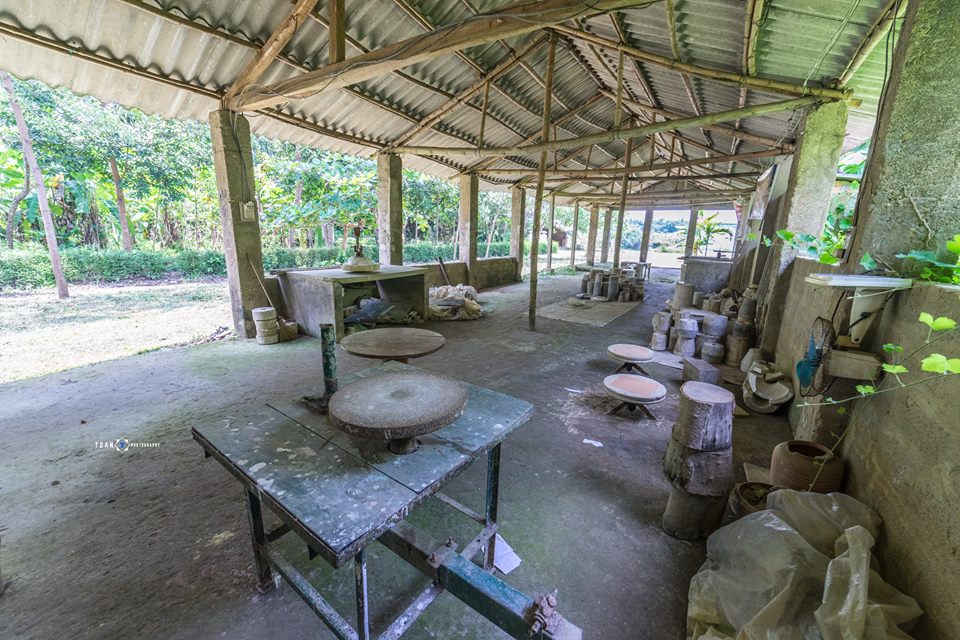
During the prosperous period, pottery from Phuoc Tich village was traded throughout the central provinces. On the banks of the O Lau River, 12 water wharves are symbolizing the 12 zodiac animals. The whole village has more than 10 ceramic kilns burning brightly day and night, bringing wealth and fame for generations. Traditional "Phuoc Tich unique" products include jars, jars, jars, trusses, braising pots, roundabouts (savings tubes), tu whistles (whistles), and apples baked into clay pots, without seepage. water. The above products are transported and sold from Nghe An to the South. Unglazed ceramic products such as flower vases... were also sold to Japan and were used respectfully in Japanese tea ceremonies. In particular, Phuoc Tich ceramic products were also used to present to the king, the most famous being the "braised pots" used to cook rice for the king.
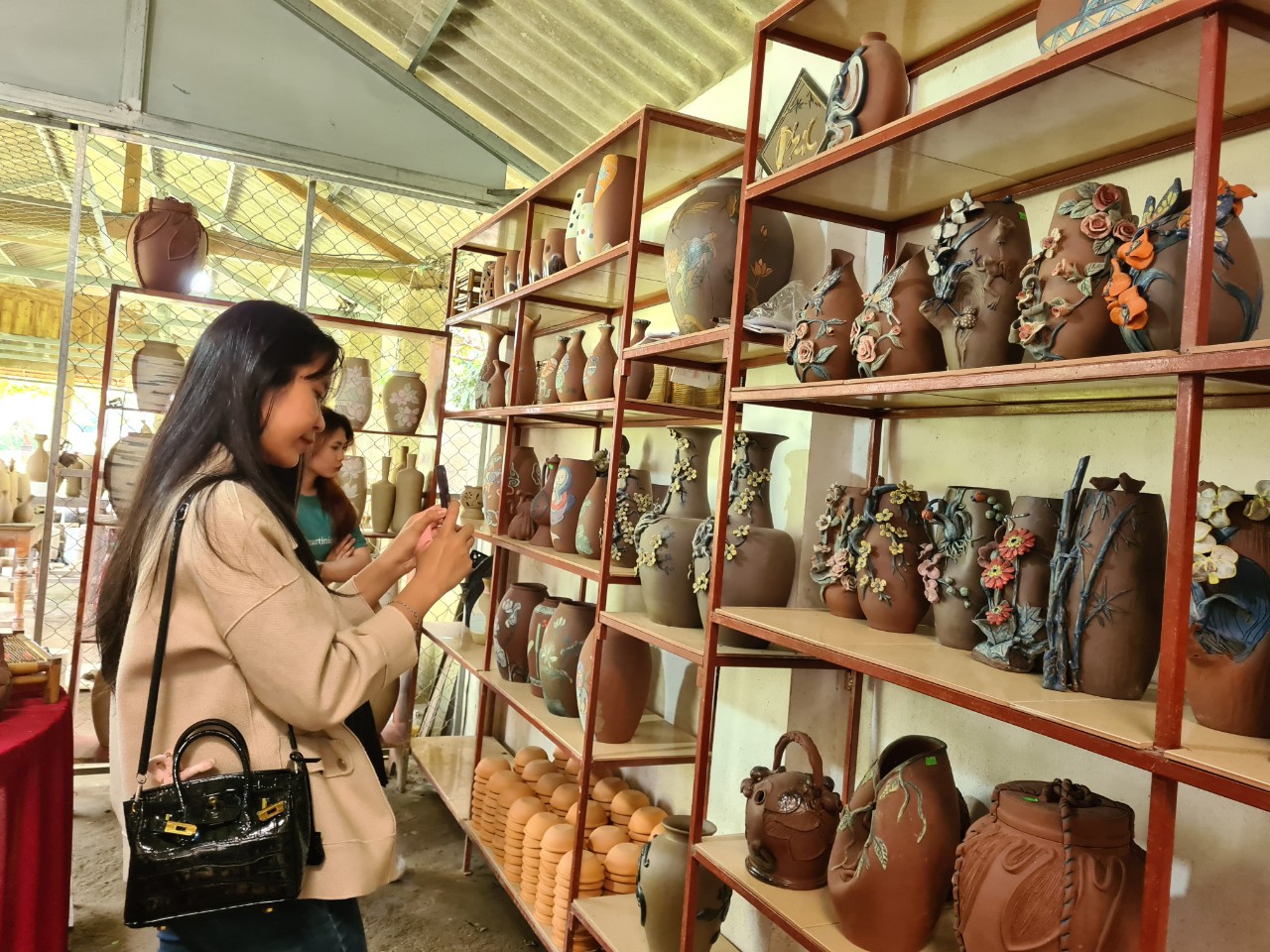
Display space for Phuoc Tich ceramic products
Tourist Attractions
Tourists visiting Phuoc Tich Village can:
- Observe the pottery-making process
- Visit restored pottery kilns
- Purchase unique ceramic products
Address: Phuoc Phu Village, Phong Hoa Commune, Phong Dien District, Thua Thien Hue Province.
Deng Weaving Village in A Luoi
Craftsmanship and Tradition
The craft of Dèng weaving is a unique form of handicraft production by the Ta Oi, Pa Ko, and Van Kieu ethnic people in A Luoi District. This tradition has been preserved and passed down through generations for hundreds of years.
Cultural Significance
The raw materials to create this product are cotton plants grown by people in the fields, through many stages such as drying, separating cotton, popping cotton, rolling, wrapping, spinning, spreading, and spinning into yarn. Once the fabric is available, people will dye it with leaves, bark, tubers, and roots harvested from the mountains and forests, the main colors are black, red, and white. Then dry and roll into buds for weaving. When weaving is finished, on the fabric, the woman skillfully places beads, and forest fruits... into patterns that are both beautiful and contain symbols of community life. Decorative patterns of the Ta Oi people are divided into 3 themes (animals, plants, nature, and objects), mainly made from beads attached to Dèng's face. This is the difference compared to brocade weaving products in other areas.
To create a beautiful Dèng cloth, in addition to the preparation of raw materials, including fabric fibers, beads, and rattles, skillful hands, gentleness on the loom, and meticulousness in beading have created unique patterned products. Dèng weaving is recognized for its cultural and historical importance. In 2016, the craft was officially recognized as a National Intangible Cultural Heritage by the Ministry of Culture, Sports, and Tourism.
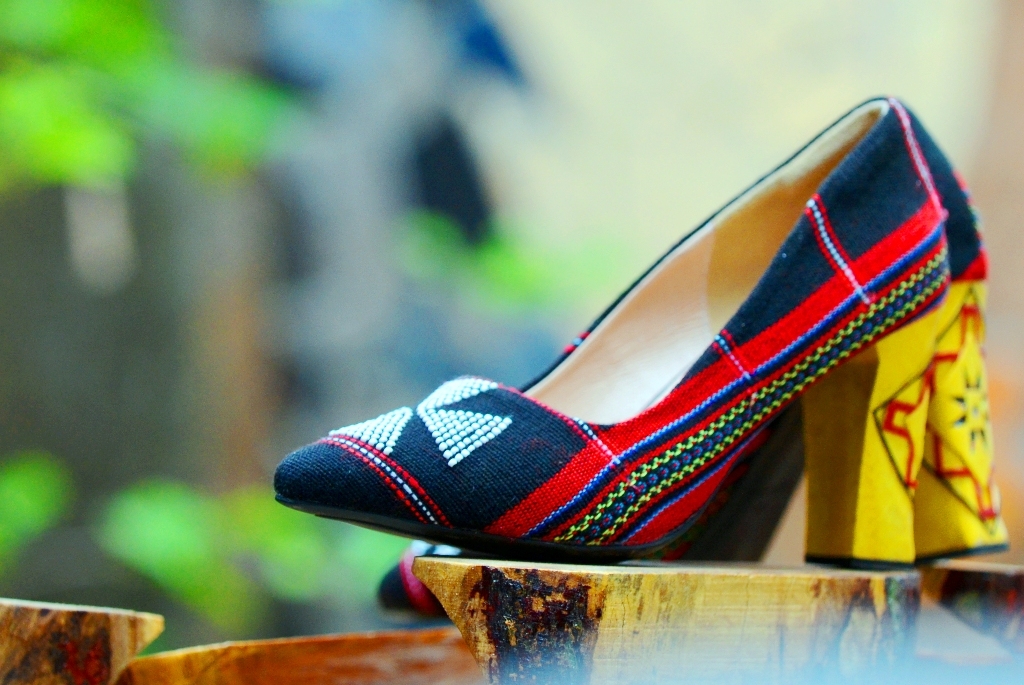
Shoes made from traditional Deng material
Visitor Experiences
Tourists visiting A Luoi can:
- Learn about the weaving techniques from local artisans
- Explore the rich cultural heritage of the ethnic communities
- Purchase handcrafted Dèng panels as souvenirs
Final Thought
Thua Thien Hue's traditional craft villages offer a unique glimpse into Vietnam's rich cultural heritage. Each village, with its distinctive craft and history, contributes to the region's cultural tapestry. These villages are not only preserving ancient traditions but are also thriving as tourist destinations, attracting visitors from around the world. Exploring these craft villages provides a deeper understanding of Vietnamese culture and the enduring legacy of its artisans.